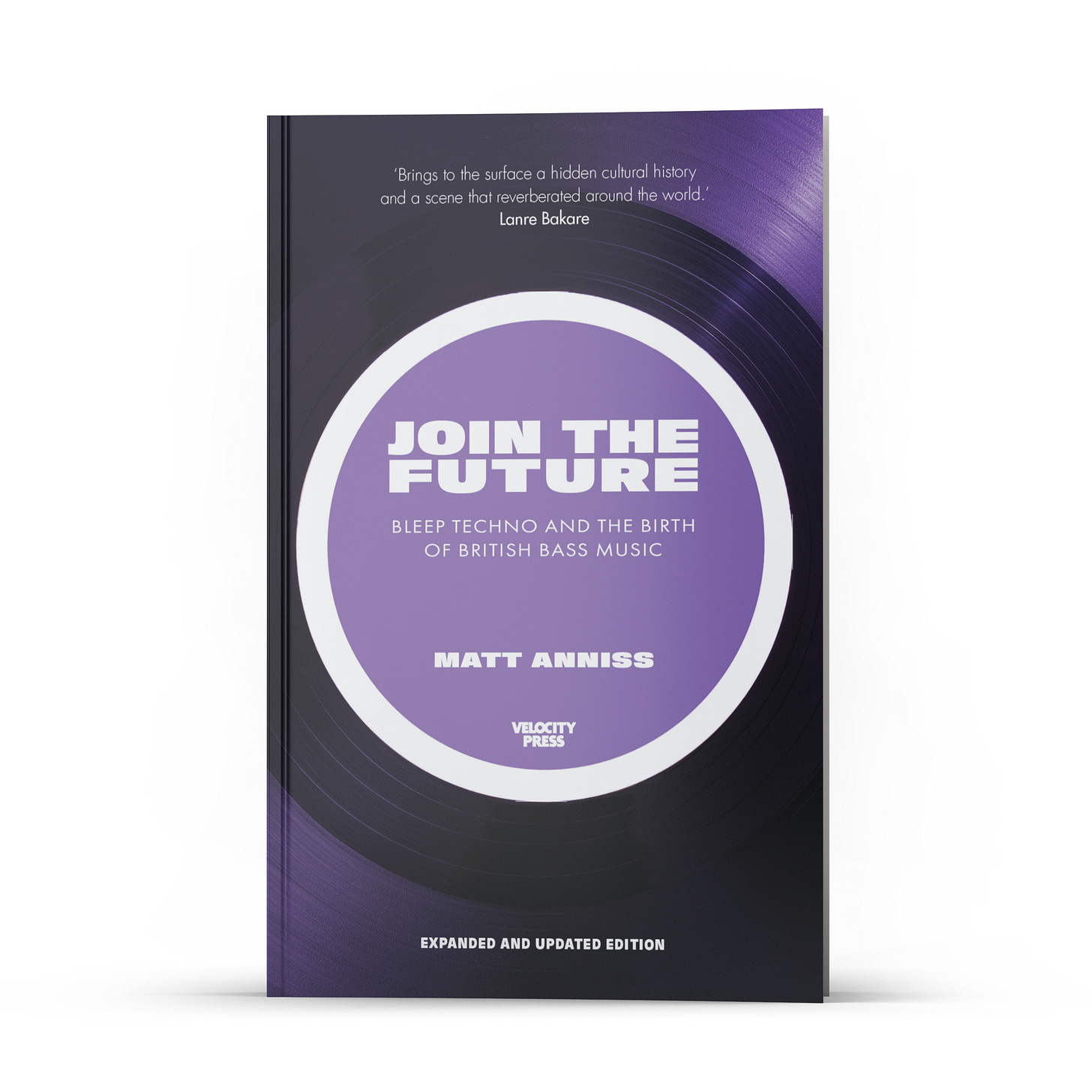Matt Anniss Is Filling Gaps in UK Dance Music History
a.k.a. An interview with the 'Join the Future' author about the flawed narratives underpinning British dance music, and how today's music journalists can do better than their predecessors.
At its core, dance music history is arguably just a collection of stories, some more iconic than others. In the US, these stories often aren’t as well known, but on the occasions they are told, they usually revolve around foundational figures like Frankie Knuckles, Larry Levan, The Belleville Three and other originators too numerous to list. Over in the UK, however, the official arrival of house music (and the subsequent birth of rave culture) is most frequently traced back to a much different cast of characters: Paul Oakenfold, Johnny Walker, Danny Rampling and Nicky Holloway. As the story goes, the young foursome took a life-changing trip to Ibiza in 1987, and after encountering house music (and perhaps more importantly, ecstasy) on the White Isle, they returned home to London and launched a series of club nights that forever changed the trajectory of British dance music.
For the past 35 years, this narrative has been repeated again and again, burnishing the status of the original Amnesiacs (as the British press took to calling them) as it popped up in countless articles, documentaries and books. It’s easy to understand why, as it’s a great piece of storytelling, but there’s one major problem: it’s not really an accurate portrayal of what happened. It’s not that Oakenfold and company didn’t make the trip to Ibiza. That part was true. It’s just that the clubs they set up afterwards were far from the first to feature house music in the UK, or even in London. The music had already been circulating for quite some time across various clubs and events throughout the country (and not just at the Hacienda in Manchester), and many of these places catered to largely Black and working class audiences.
Although there’s been no shortage of mythmaking within UK dance music circles over the years, it seems that the details of the genre’s earliest days in the country have not only been largely left out of the prevailing narrative, but in many cases, they weren’t even documented in the first place. That’s a big reason why Matt Anniss’ book Join the Future is such a valuable work. First published in 2019 following years of research, it’s ostensibly a detailed history of the bleep genre—a distinctly UK sound and breakbeat hardcore precursor that briefly flourished during the late 1980s and early 1990s. But in telling that story, Anniss has also rewritten (or at least recontextualized) a significant chunk of early British dance music history, clearly demonstrating that the foundations of the acid house explosion and the second Summer of Love were laid well before a group of young London DJs headed over to Ibiza for the first time.
With a newly expanded edition of Join The Future being released this month via Velocity Press—it can be purchased online here—I figured now would be a good time to speak with Anniss. During an expansive conversation last weekend, we of course talked about the book (and why he decided to put together this new edition), but much of our discussion was actually focused on the shortcomings of UK dance music history, including both what he calls the “Ibiza origin myth” and also Simon Reynolds’ much-cited idea of the “hardcore continuum.” Beyond that, we touched on the differences between music journalism and music history, dissected some of the challenges faced by today’s music press and pondered the role of the music journalist in the current cultural landscape.




